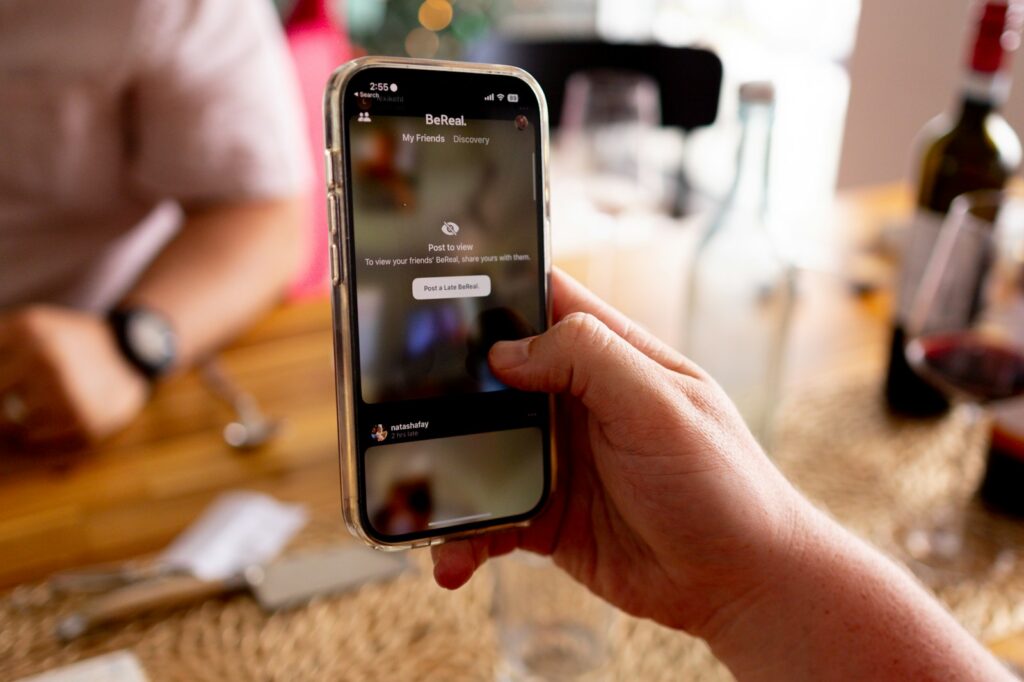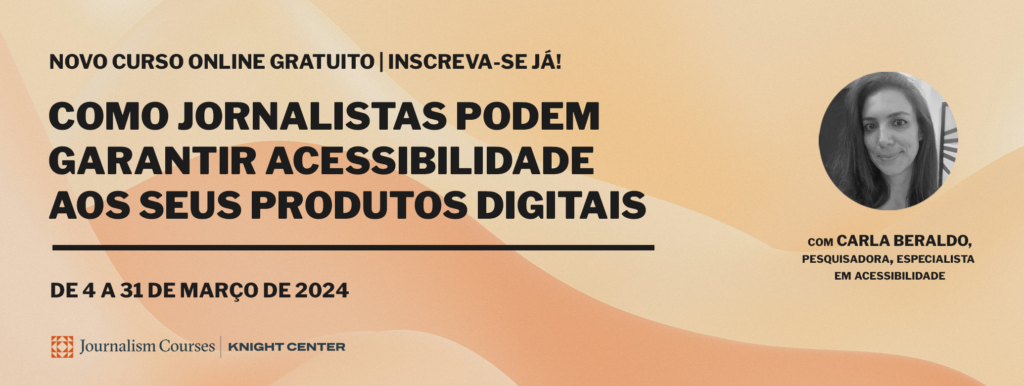
The digital era has brought new resources for accessibility and inclusivity, like alt text and audio description of photos and videos, but using these new technologies is often an afterthought in newsrooms. In recognition that accessibility is fundamental to journalism’s responsibility to inform, the Knight Center for Journalism in the Americas is excited to announce a new free, massive online course in Portuguese aimed at equipping journalists with tools to create inclusive multimedia content across platforms and for diverse audiences.
The course, “Como jornalistas podem garantir acessibilidades aos seus produtos digitais” to be held March 4-31, 2024, is a collaboration between the Knight Center and the Online Journalism Research Group at the Federal University of Bahia in Brazil. Register here to participate in this unique and urgent course.
“There are many reasons that a journalist needs to be mindful about accessibility, but primarily it is the role of a journalist to inform the public about what is happening in their communities, and people shouldn’t be excluded as a result of their disability,” said Carla Beraldo, who was a winner of Google News Initiative’s 2022 Innovation Challenge for creating the Reverta Accessibility Protocol, a journalistic innovation project focused on enhancing news accessibility for people with visual disabilities.

“We are proud of this collaboration with Carla Beraldo and her group at the Federal University of Bahia to offer this opportunity to journalists who speak Portuguese,” said professor Rosental Alves, founder and director of the Knight Center. “There is a global movement to make the internet accessible to all, and there are many things journalists can do to ensure that people with disabilities have access to the news. Technology offers the tools, it’s up to journalists to learn and apply them.”
During the asynchronous four-week course, participants will learn about the principles, laws and standards shaping inclusive digital content, and gain practical insights into crafting accessible multimedia content, such as strategies for integrating audio descriptions, image descriptions and other accessibility features tailored to platforms such as Facebook, X (formerly Twitter), Instagram and YouTube.
Under the direction of Beraldo, the course instructor, participants will engage in hands-on exercises and dialogues, mastering the art of crafting content that not only meets accessibility standards but also captivates and informs audiences effectively.
“Accessibility is a characteristic of journalism in digital networks. Disability is a mismatch between a person and their environment. Accessibility is the correction of this mismatch. By being accessible, we are allowing for greater audience engagement and avoiding filter bubbles or echo chambers,” Beraldo said. “You should want to create a dialogue with and between your readers, and striving for accessibility permits the widest array of voices and opinions.”
The course is designed to accommodate the diverse needs and schedules of participants. With asynchronous learning, students can engage with course materials at their own pace, completing activities and participating in discussions as their schedules allow. Whether you’re a seasoned journalist, a communication professional, an educator or a student, this course offers valuable insights into creating content that is accessible to all.
“This accessibility course equips you with the knowledge and skills to create digital experiences that are not only legally compliant but also user-friendly and inclusive for all. Whether you’re a developer, designer, content author or project manager, investing in accessibility education is a valuable step in your professional journey,” Beraldo said.
Although this course is asynchronous, meaning there is no mandatory live instruction, interactive learning is still encouraged via discussion forums and live office hours with the instructor. These sessions will be recorded to ensure those who are unable to attend live can access them later.
The course will be organized into four modules:
Don’t miss out on this chance to make your digital products more inclusive and accessible to diverse audiences!
At the end of the course, the Knight Center team will verify the activities of all students to determine who qualifies for the free completion certificate..
“Learning about accessibility fosters empathy and a deeper understanding of the challenges faced by people with disabilities,” Beraldo said. “It encourages a more compassionate approach to design and development in the media landscape.”
Join us on this journey toward a more inclusive digital landscape. Register now for “Como jornalistas podem garantir acessibilidades aos seus produtos digitais”

Knight Center for Journalism in the Americas
300 West Dean Keeton
Room 3.212
Austin, TX, 78712
Phone: 512-471-1391
Email: journalismcourses@austin.utexas.edu